Lake Wenatchee sockeye fishery and boost on Upper Columbia sockeye daily catch limit begins this Monday, plus updates on local halibut and chinook fisheries Leave a reply
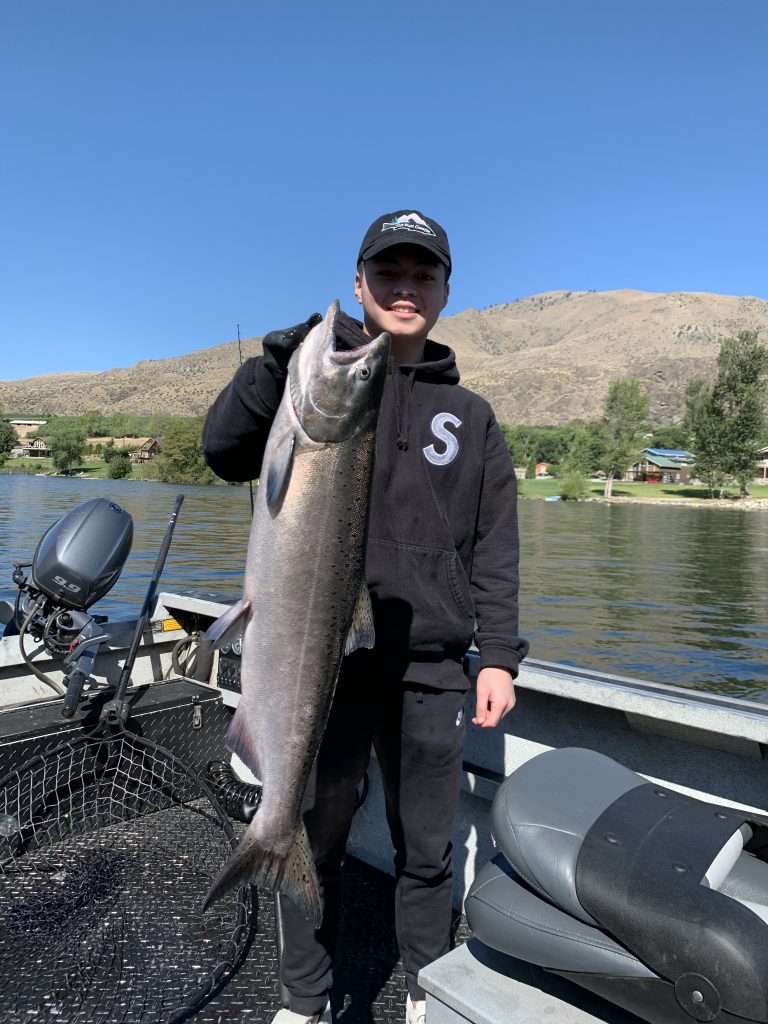
By Mark Yuasa
The sockeye run heading up the Columbia River is waxing expectations, and the Washington Department of Fish and Wildlife (WDFW) has decided to open Lake Wenatchee and liberalized the Upper Columbia mainstem sockeye daily limit beginning this Monday (Aug. 3).
“We’re expecting a good sockeye return of 35,000 to 40,000 (39,400 is the forecast) to Lake Wenatchee, which leaves about 8,000 to 15,000 for folks to catch,” said Chad Jackson, a WDFW biologist in Ephrata who points out the preseason forecast for the Columbia River mouth was 246,300 fish and has been upgraded to 343,400. “This is a very popular fishery in a beautiful part of Washington, and we’re optimistic that anglers will see plenty of success this August.”
Sockeye returns have been poor the past two years and this will be the first time the lake has been open since 2017.
The sockeye count at Tumwater Dam just below Lake Wenatchee through July 24 is 25,809. Single-day counts were 1,365 on July 24; 3,060 on July 23; 4,469 on July 22; 4,578 on July 21; 5,324 on July 20; and 5,499 on July 19.
Anglers can hit the lake located in Chelan County beginning one hour before official sunrise on Monday (Aug. 3).
The lake itself is fine and has a good water temperature due to the cooler than normal temperatures prior to the recent heatwave, and the sockeye are fine, healthy and should be on the “bite” when fishing opens.
The daily limit is four sockeye per angler with a minimum size of 12 inches. Selective gear rules (up to three single-point barbless hooks per line, no bait or scent allowed, and knotless nets required) are in effect.
Anglers may fish with two poles if they possess a valid two-pole endorsement. A night closure will be in effect. Legal angling hours are one hour before official sunrise to one hour after official sunset.
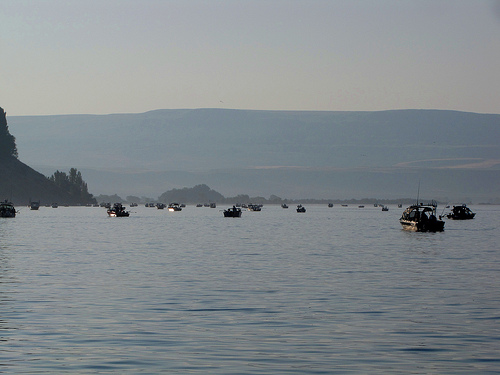
Bull trout, steelhead, and chinook salmon must be released unharmed without removing the fish from the water.
The daily sockeye limit on the Columbia River mainstem above Priest Rapids Dam will increase from two to four daily beginning this Monday (Aug. 3) as returns to the Okanogan River system remain strong. Up to two may be adult hatchery chinook and up to four may be sockeye. Minimum size is 12 inches and anglers must release wild adult chinook and coho.
Salmon fishing from Pateros up to Brewster has been excellent for a mix of sockeye and hatchery kings.
“It has slowed down a little bit and might be due to the warmer water is putting a shock on the fishes system, and now it’s taking us 40 minutes instead of 20 minutes to get a limit of sockeye and kings,” Aaron Peterson, owner of Peterson’s Northwest Guide Service, said with a chuckle.
Elsewhere, west side anglers continue find decent catches of sockeye at Baker Lake, which remains open through Sept. 7.
Sockeye counts continue to increase with 7,384 transferred to Baker Lake and total count at the Baker River fish trap through July 26 is 14,456.
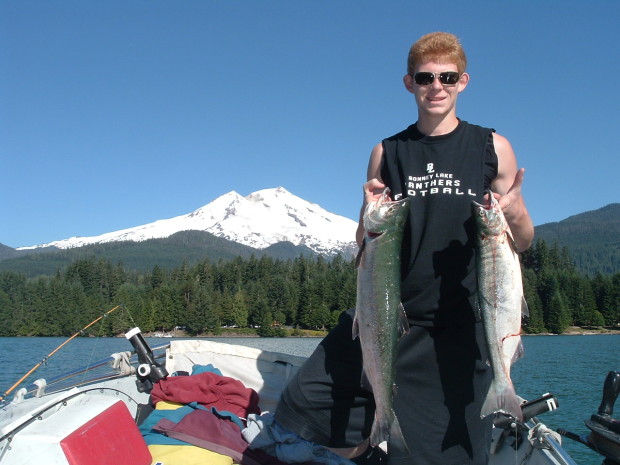
Baker Lake has a two-sockeye daily limit, 18 inches or longer, and a two-pole endorsement. Everyone in a boat is allowed to fish until all anglers reach their two-fish daily limit.
While there won’t be a sockeye fishery on Lake Washington, the good news is the sockeye count at Ballard Locks fish ladder hit 22,326 through July 26 and has surpassed a pre-season forecast of 20,166. Daily counts have been 356 on July 26; 27, July 25; 303, July 24; and 385, July 23.
In 2019 the season total was 17,411; in 2018 it was 32,103; and in 2017 it was 112,934.
The last time a fishery occurred was 2006 when 453,543 returned. That allowed an 18-day sport fishery (provided about 60,000 fish between sport and tribal fisheries) and brought millions of dollars to the local economy.
Other dates a Lake Washington sockeye fishery was held included 2004, 2002, 2000 and 1996.
Puget Sound summer chinook fishery unusually slow
Many have been scratching their heads over why the hatchery chinook fishery in northern, central and south-central Puget Sound has been so slow.
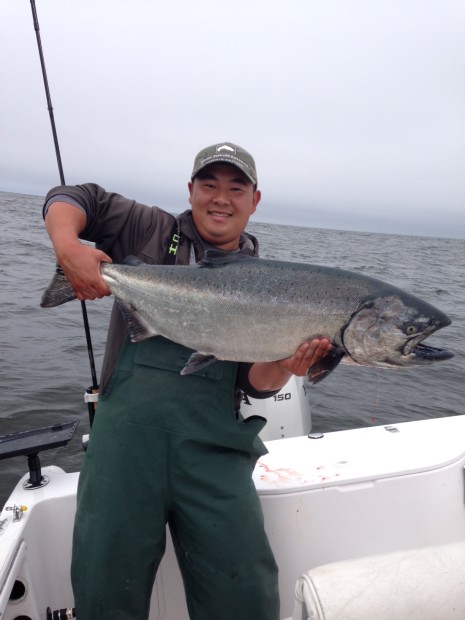
“Interesting conundrum we find ourselves in,” said Mark Baltzell, a WDFW Puget Sound salmon manager. “Did we forecast too high this year? Are fish late? Sekiu (closing for chinook retention on July 31) and Area 7 (San Juan Islands closing after July 31 for chinook retention) seem to be running at or above normal. Everywhere else seems below or well below what would be “normal” or average.”
At this point, WDFW says the Tulalip Hatchery chinook run is coming in at 60 percent of expectation, the Ballard Locks counts for chinook seem to be tracking well with pre-season expectations and the Elliott Bay tribal test fisheries are on par with expectations.
WDFW won’t raise the daily hatchery chinook catch limit because all it takes is for catches and effort to skyrocket at a moments notice, leading to emergency closures, which is something nobody wants at this point.
“Time on the water is the highest priority,” said Tom Nelson, host of 710 ESPN The Outdoor Line and WDFW Puget Sound sport fishing advisory board member.
Baitfish (herring and candlefish) remain abundant throughout Puget Sound from Midchannel Bank south to Olympia so that is great news.
In recent days more chinook appeared in catches at Midchannel Bank off Port Townsend and Port Angeles so hopefully we’ll see a push of fish entering into Puget Sound very soon.
Inner-Elliott Bay will open this Friday (July 31) to noon on Aug. 3 for chinook fishing. Expect this fishery to be extremely crowded off Duwamish Head marker, near the Pier 91 breakwater outside of the Elliott Bay Marina, near Salty’s Restaurant and off the west and east waterways.
Sekiu in the Strait of Juan de Fuca (Area 5) the total legal-size encounter is 6,662 hatchery chinook of a catch guideline of 7,032 which puts the area at 95 percent.
WDFW checks July 1-5 at Sekiu: 1,405 boats with 3,350 anglers kept 1,518 hatchery-marked chinook (plus 9 unmarked fish illegally kept) and released 1,275 hatchery-marked chinook and 2,099 unmarked chinook. July 6-12: 1,567 boats with 3,877 anglers kept 1,159 hatchery-marked chinook (plus 9 unmarked fish illegally kept) and released 973 hatchery-marked chinook and 1,601 unmarked chinook. July 13-19: 1,359 boats with 3,229 anglers kept 265 hatchery chinook & released 305 hatchery & 423 unmarked chinook. July 20-26: 1,261 boats with 2,796 anglers kept 375 hatchery-marked chinook (plus 4 unmarked illegally kept) and released 499 hatchery-marked and 615 unmarked chinook.
San Juan Islands (Area 7) harvest estimate is 1,317, which is 84 percent of a catch quota of 1,562.
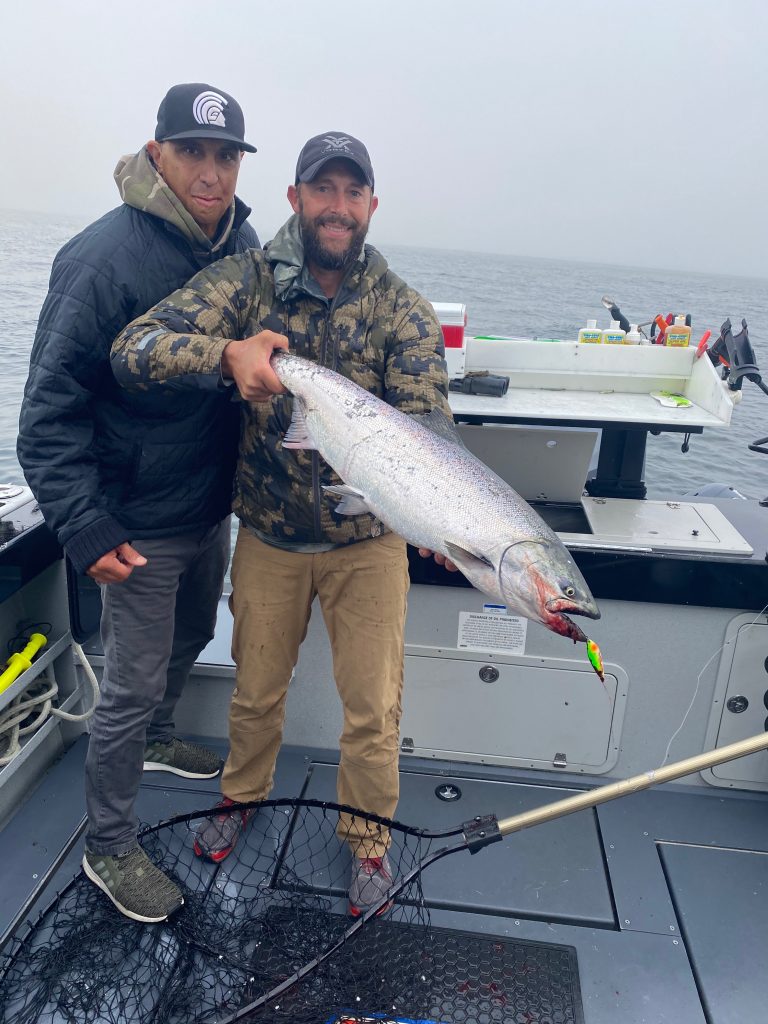
WDFW checks July 1-5 at San Juan Islands: 1,712 boats with 4,039 anglers kept 483 hatchery-marked chinook (plus 3 unmarked fish illegally kept) and released 488 hatchery-marked chinook and 205 unmarked chinook; also 5 unmarked coho kept. July 6-12: 1,856 boats with 4,024 anglers kept 410 hatchery-marked chinook and released 415 hatchery-marked chinook and 177 unmarked chinook; also 6 marked coho kept. July 13-19: 1,441 boats with 3,184 anglers kept 240 hatchery chinook & released 208 hatchery & 52 unmarked chinook. July 20-26: 1,258 boats with 2,867 anglers kept 213 hatchery-marked chinook and released 199 hatchery-marked and 103 unmarked chinook.
Northern Puget Sound (Area 9) harvest estimate is 1,702, which is 26 percent of a catch quota of 6,542.
WDFW checks July 16-19 in northern Puget Sound: 4,508 boats with 10,617 anglers kept 954 hatchery-marked chinook and released 3,067 hatchery-marked chinook. July 20-26: 4,219 boats with 9,258 anglers kept 695 hatchery-marked chinook and released 1,834 hatchery-marked and 532 unmarked chinook.
Central Puget Sound (Area 10) harvest estimate is 241, which is 6 percent of a catch quota of 4,159.
WDFW checks July 16-19 in central Puget Sound: 1,688 boats with 3,674 anglers kept 109 hatchery-marked chinook and released 142 hatchery-marked chinook and 63 unmarked chinook. July 20-26: 1,625 boats with 3,335 anglers kept 116 hatchery-marked chinook (plus 5 unmarked fish illegally kept) and released 84 hatchery-marked and 61 unmarked chinook.
South central Puget Sound (Area 11) harvest estimate is 562, which is 13 percent of a catch quota of 4,196.
WDFW checks July 1-5: 1,220 boats with 2,159 anglers kept 135 hatchery-marked chinook and released 64 hatchery-marked chinook and 133 unmarked chinook; also 27 hatchery coho kept and 25 unmarked released plus 3 hatchery coho and 6 unknown released. July 6-12: 1,846 boats with 3,449 anglers kept 210 hatchery-marked chinook and released 100 hatchery-marked chinook and 207 unmarked chinook; also 15 hatchery and 4 unmarked coho kept and 6 hatchery and 4 unmarked coho released. July 13-19: 1,677 boats with 3,438 anglers kept 96 hatchery-marked chinook and released 69 hatchery-marked and 62 unmarked chinook. July 20-26: 1,284 boats with 2,474 anglers kept 121 hatchery-marked chinook and released 87 hatchery-marked and 78 unmarked chinook.
Coastal halibut fisheries set to begin Aug. 6
The WDFW confirmed its Aug. 6 opening of coastal halibut recreational fishing season, which was previously delayed due to the COVID-19 pandemic. Puget Sound (Marine Catch Areas 5 to 10) will also reopen with additional fishing days.
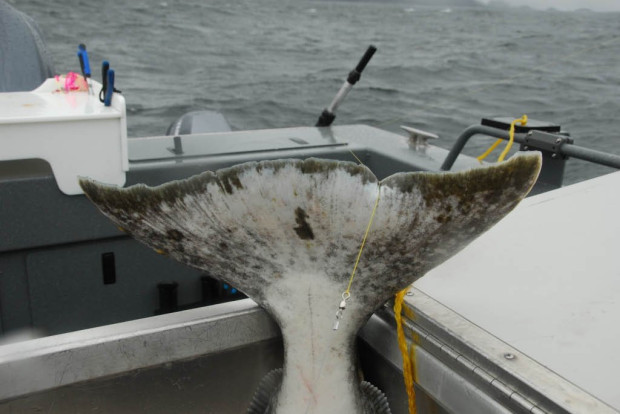
“Although it looks a bit different from the typical halibut season that anglers might be used to, this approach continues to prioritize health and safety, economic investment into port communities, and time out on the water,” said Heather Hall, WDFW’s intergovernmental ocean policy coordinator in a news release. “We’re thrilled to see this season come together since envisioning it alongside stakeholders and public health officials earlier this summer.”
Neah Bay on the Makah Reservation and La Push on the Quileute Reservation all remain closed to the public therefore access is allowed from other ports like Sekiu and Westport.
Marine Areas 1 (Ilwaco/Chinook) and 2 (Westport) All-depth: Open Thursday August 6. Then beginning August 13, open two days per week, Thursdays and Sundays, through September 30 or until the quota is taken. If the number of anglers participating and the number of halibut caught is lower than expected, additional days may be added. Proposed additional days are, Friday, August 28; Friday, September 4; and Friday, September 11.
When fishing in the deepwater lingcod closed area in Marine Area 2, anglers can keep lingcod on days open to all depth halibut fishing.
In Marine Area 1, during the all depth fishery, anglers can retain flatfish, sablefish, Pacific cod, and lingcod north of the Washington-Oregon border when halibut are on board.
Marine Area 1 (Ilwaco/Chinook) Nearshore Area: Open Monday August 10. The nearshore fishery in Marine Area 1 will be open three days per week, Monday, Tuesday, and Wednesday until the nearshore quota has been taken. Bottomfish may be retained with halibut on board in the nearshore area only.
Marine Areas 3 (La Push) and 4 (Neah Bay): Open Thursday, August 6. The fishery in this area will be open three days per week, Thursdays, Fridays, and Saturdays, August 6 through September 30 or until the quota is taken.
Puget Sound halibut season (Marine Areas 5 to 10): Open Thursday, August 6. The fishery in this area will be open three days per week, Thursdays, Fridays, and Saturdays, August 6 through September 30 or until the remaining quota is taken.
In all marine areas open to halibut fishing, there is a one-fish daily catch limit and no minimum size restriction. Anglers may possess a maximum of two halibut in any form while in the field and must record their catch on a WDFW halibut catch record card. There is an annual limit of four halibut.

